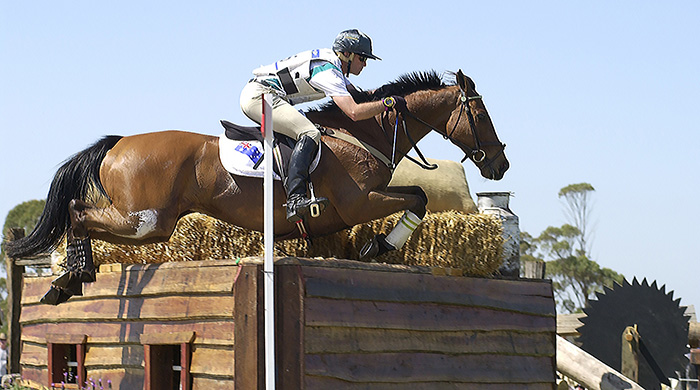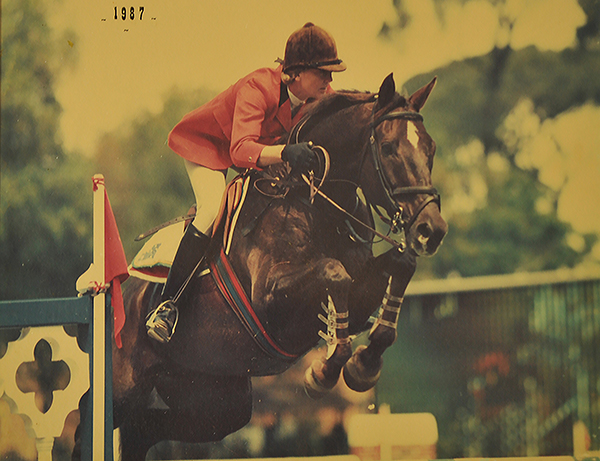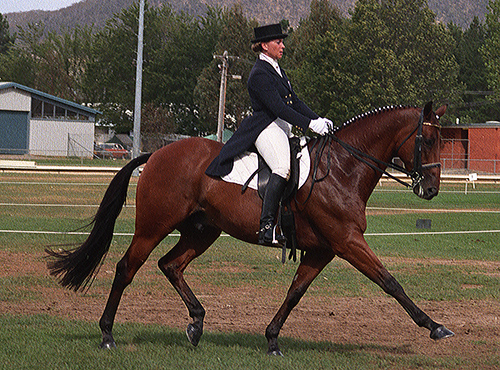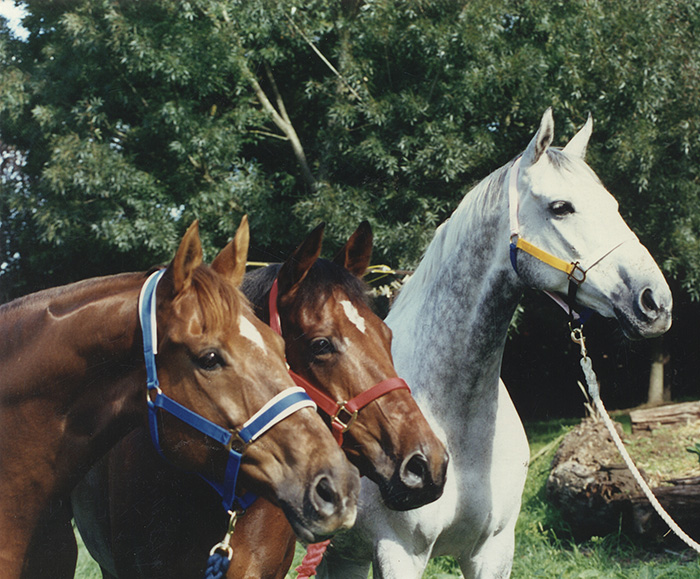by Christopher Hector
(for my non-Australian readers, here is a link to a report of the shocking mistreatment of Thoroughbred racehorses at a slaughter house, as revealed on the current affairs program, 7.30 Report)
I have to admit I did not see the 7.30 report, and I have no intention of torturing myself by watching it. I guess those of us who have been around the world of the horse, with our ears and eyes open for more than a year or two, are not surprised. But the level of straight out cruelty in the treatment of the horses sent to slaughter was shocking and unexpected, although a trip to the slaughter house for any animal must be a horrific experience, and adds weight to the argument that those of us who have yet to embrace a vegetarian diet, should have to pay extra for meat killed at the farm gate, and ban abattoirs entirely. In future I will buy all my meat from Provenir, knowing that it has not gone through the horrors of an abattoir.
The real scandal of the Thoroughbred industry, of which we have been well aware, is of the level of over-production and wastage. It’s the same with greyhounds, trotters, and for that matter Warmbloods. As long as there are more Thoroughbred foals than can possibly fit onto the racetracks of Australia, then a fairly high proportion need to be tossed out of the racing stables before they even have one race.
It is true that many of these racetrack rejects find loving homes. Indeed the last three horses I rode were all too slow to race, but wonderful generous creatures who gave me much pleasure, and who had long and enjoyable lives.

Stuart Tinney, and Jeepster an off-the-track Thoroughbred. The combination were part of the Australian Gold Medal Eventing Team at the 2000 Olympics in Sydney
But it is not true, as the racing authorities keep repeating, that all of these horses can be absorbed into the equestrian world. Once racetrack rejects were Gold Medal winning eventers, even World Class showjumpers, even a few Grand Prix dressage horses – now our front-line riders, even the eventers, are looking for largely Thoroughbred horses, but with enough Warmblood to handle the dressage and showjumping phases. At the last Games, not one of our eventing team was riding a Thoroughbred. It’s nice that many of the competitions are putting on classes, and making special awards for off-the-track horses, but there is no way all the horses coming out of racing can be absorbed by equestrian sports.

Vicki Roycroft and Apache winning the Grand Prix of Sienna in Rome, in 1987
As I see it, there is only one way to break the nexus, and that is to drastically reduce the number of Thoroughbred foals that are produced each year. How? Make the registration fee for each foal really expensive, say, $10,000 – and make sure the foals have to be registered to be eligible to race. Then we might get the numbers back to a manageable level, and the young horses would be valuable commodities with every effort made to get them to the track.
The money gathered from the registration fees – along with some of the obscenely high prize money – could be used to set up a series of re-training facilities. Unless the horse was going to the owner’s property to live out racetrack retirement, all horses coming out of racing stables, whether they have made it to a race start or not, would go to a re-training centre to be assessed. Now I know I am about to say something that will outrage some, but there are horses that are not capable of adjusting to ‘civilian’ life, we have all met, possibly bred, horses that are simply dangerous, and these horses should be humanely put down at the re-training centre. NO horse should end up at an abattoir, that should be illegal.

Judy Dierks and Galoubet, dressage winners at Grand Prix level
The horses from the re-training centres should be placed with people who have participated in horse care courses at those same centres, and demonstrated that they are capable of their care.
The number of horses that are difficult or impossible to re-train should be monitored, and trainers who are producing more than their share of damaged horses investigated, and where necessary, banned from racing.
It doesn’t help that our Equestrian Federation likes to mount ‘cutesy’ campaigns suggesting that people should enrich their lives by purchasing a pony or a horse. Taking care of equines is not easy. It requires knowledge – and those good old horse people who could provide advice to the novice have largely disappeared – and resources. Horses are large, unpredictable and dangerous, a responsible Equestrian Federation would be warning potential horse owners of the pitfalls.
On the positive side, when racing authorities can put up $14 million on a single race, there is obviously more than enough money to solve the situation. Everyone who cares about horses should give thanks to the 7 .30 report for exposing horrific cruelty, it must shock the Thoroughbred industry into action, or else they may just discover that having turned the sport of kings into a fashion fad, just how fickle fashion is…

Here are the final three horses in my riding life – Fad (Picasso), Silver (Whispering Jack) and Gallie ( who won a Novice hack class), no one remembers their racing names, they were way too slow, but what wonderful wonderful creatures they were…



My sentaments exactly
Very sad scenario.
Your idea could be a positive one,
With so many horses bred the potential is there to encourage a quick turnover if the talent isn’t quickly obvious.
If numbers were lessened via higher costs to breed hopefully persistance would prevail and in time more talent would be discovered without the numbers discarded.
The success rate for racehorses is woefully challenging.
1in how many win a race..1 in a ridiculous number win more than one.
How many don’t even make the track?
I believe in racing I want it to survive.
But things do need to change.
Excellent article and I agree with your proposals. I couldn’t watch 7.30 report too horrific for me. I think that every slaughter house because that’s what they are, should have cameras and film every animals journey through it. Let’s hope that this tv report will help horses.
If they don’t change the game, it must be changed for them. Across the board, indiscriminate and unchecked/regulated animal breeding leads to the deaths of tens of thousands of animals. It is an obscenity and a stain on our nation. The TB industry has played see no evil, hear no evil, speak no evil about this wicked state of affairs for years. No more. I have 5 OTT boys. 2 are permanently retired, having made it clear that they just can’t do riding stuff any more. One was so brutalised at his stables that he has PTSD, and is in the process of being rehabbed. But if he can’t make a full recovery he too will retire.The other 2 had such mercifully short careers that their damage is minimal. Both are talented and beautiful, I adore them, and together we will fly the OTT flag. This vicious, evil state of affairs can’t continue. We must all demand effective political action, and keep applying political pressure so that the big money guys can’t just pressure and/or bribe their way out of accountability.
Totally agree with your suggestion to solve the over supply in the thoroughbred industry. Please put this forward to the regulators and meanwhile let’s hope the morons working at the slaughterhouses are more accountable. The drought and scarce horse feed will no doubt escalate the numbers being sent to there. At the same time It’s unrealistic to hope that all retired racehorses currently being churned out will live happily ever after in someone’s grassy paddock. To be euthanised in a humane and compassionate environment should be the right of every horse (animal).
Love these three beautiful faces … how lucky they were to end up with you !
Chris, thank you for your excellent article and timely response to the ABC’s report on TB wastage – absolutely gruelling. I agree totally with your comments.
Yes, we have always known the number of TBs ending their lives at slaughter houses (doggers/knackeries) has been unacceptable, but I am ashamed to say we have lived with it.
However, the magnitude and slaughterhouse practices provided to us by the ABC on Thursday night has shaken us to the core.
My question to you, Chris, is how can we, as individual amateur equestrians, join forces to create a groundswell to push the various TB associatons and Government to limit breeding numbers and improve slaughter house practices. A big obstacle is we are small amateurs against wealthy and financially backed breeders and an industry with political influence. Can we become a movement? Or do we just hope that the RSPCA will act with regard to the animal welfare and brutality issues.
Chris, as someone who has knowledge and is front and centre of the equestrian media, I am asking your advice on how we can create a groundswell to advocate change? I can write letters, I can make appointments with the CEOs of the various racing organisations, but we need much more than that.
And on lighter note, thank you for the Horsemagazine.
Cheers
Julie
We’ve all known that the slow or used-up racehorses end up at the knackery, it’s been like that for decades. I guess we’ve all sort of thought they met a quick and humane death, knocked unconcious with a stun gun and quickly dispatched. Obviously we were so wrong!! And don’t forget the broodmares that get too old to produce a foal anymore. They go to the knackery too.
The racing industry does need to do more to help these horses. I think the majority of ‘equestrianism’ in Australia is on ex-racehorses. Warmbloods may dominate the top levels of dressage and showjumping, but pleasure riders and grassroots riders still use ex-racehorses. They are everywhere, and that’s great that we can look after the lucky ones.
My mare was bred for racing but she was way too slow, and she is a sweetheart as a basic dressage horse. It torments me that she might have ended up with the doggers. One of her owners at some point has realised how quiet and friendly she was, and has made sure she went to someone before me as a pleasure horse. If only the others has been given such a chance. So sad.
Yes, we definitely need to make the breeding of race horses much more expensive. Or perhaps there are other solutions? A legally binding commitment to supporting any horse you breed for the rest of its life, perhaps? Actually that could well be the solution for a lot of animal cruelty issues. Another possibility that Chris’s excellent article does not mention is an expansion of the market for retired race horses. Too many horses are taken up by people who do not have the skill to handle them, and this is not because these are bad horses, but because their new owners can’t ride well enough.
Access to basic and intermediate riding lessons is not always easy away from the pony club scene, and it is not unusual for adult beginners to more or less teach themselves to ride, and not unsurprisingly they often make a hash of it. But there is nothing to compel a rider to have attained a given level of competence before they buy their own horse, and if there was, are there enough riding schools to teach them? And if there aren’t enough riding schools what can we do about that? Tax relief for equestrian businesses, perhaps? Maybe we could start with the simple recognition that riding is indeed as sport, and worthy of the same sort of public support as golf, or tennis, or swimming, or hockey – all of which get government subsidised facilities.
Then too, we need to recognise that the majority of potential riders live NOT in the bush but in the big cities. The only way they get to ride is by driving for hours, or by purchasing city edge acreage and attempting the whole horse-keeping thing on their own. How much better is the European model of accessible inner-city riding schools and livery yards? Surely with the right tax structure (and maybe even a bit of government help?) such facilities, now ludicrously and prohibitively expensive to set up and, worse, to run, might provide the sort of support that riders who would take on a retired thoroughbred if they could, need?
I totally agree that overbreeding is one of the major factors at the heart of the problem, however another driver of overbreeding is the way studs have become an industry unto themselves (apart from the racing industry), and therefore they have become an intransigent lobby group. Their profitability is not determined by fit-to-racing horses, but rather the sheer numbers of foals on the ground… their whole revenue stream comes live covering and mare agistment throughout the course of covering, gestation and birth. This is why they have fought so hard to not allow AI or ET, because them they’d lose the revenue that comes from their business model. I’m sure initially the reason given for live cover was to ensure that the registration was verifiable, but now with the current excellent results from AI and ET as well as DNA testing we shouldn’t need to transport horses long distances. I think that changing these rules would really shake up the stud industry and take away a lot of their power. Then your $10,000 rego fee at birth would really bite.
Another huge issue is racing horses as two year olds… they shouldn’t even be started until they are closer to four. This would slash the 60%+ WASTAGE numbers, because more horse would remain sound and not mentally traumatised. If nothing else they would be far more likely to successfully find another career.
I disagree with Anna that the European model of livery stables is a possible solution, because all the research tells how detrimental it is a horses physical and mental wellbeing. I won’t elaborate, because people can do their own research, and probably start with papers by Bennett and McGreevey.
All abattoirs should have 100% coverage and 24/7 CCTV, and all staff should be thoroughly vetted for propensity for violence whether that’s towards women, children or animals.
As a Coach I’m pretty brutal about the care and responsibilities that come with horse ownership… so no-one is in any doubt regarding the facilities that they need, the costs of excellent care and the long term responsibilities towards every horse that they own.
Excellent article and some great comments above.
In particular I agree with Julie Kershaw and Karen Miller that we need to exert and keep exerting political pressure about this issue.
For too long the racing industry has relied on the sporting and pleasure riding equestrian community to absorb their “wastage” without regard to the impossibility of finding good homes for so many horses, many of whom are damaged by their racing experiences. I have one OTT who is now 17yo and much adored. He will be with me for the duration of his natural life, but I can’t afford to take on any more and care for them properly, much as I would like to do so.
The racing industry is clearly unwilling to regulate itself, so it must be regulated.
There should be a quota for the number of foals bred across the country. The privilege of being able to breed a thoroughbred or standardbred could go to the highest bidder and that fee should then be attached to that foal as a retirement benefit, which would go to that individual horse’s re-training and re-homing, or in the worst scenario, to their humane euthanasia by a vet. The retirement fee should be held by an independent body not associated with the racing industry. Needless to say, all racehorses should be traced from birth to death, not just to “retirement” from racing. To make this work there would have to be the political will to police and enforce the quota.
As for the slaughterhouses – there are already laws governing cruelty to animals under which these disgraceful places can be prosecuted. The punishments just have to be sufficiently severe that humane practices are enforced, or they’ll just continue as they are, disgusting, horrific places of torture for all animals who pass through their gates.
I agree Chris wholeheartedly with your suggestion for encouraging mobile butcher services and getting rid of slaughterhouses all together.
Great reply from Kerrri Pitts, push the eligible racing age to close to 4, that will solve 2 problems at once. It will reduce soundness issues and make it more expensive to produce a horse to race. That could create a situation where less horses are brought on to be raced.
I watched the whole story and sent a note to the 7.30 report thanking them for producing the story, it was nothing short of horrifying.
I already knew this as I’ve been in abattoirs before, witnessing cows knowing what’s coming was enough for me.
I wouldn’t trust the racing industry with the welfare of any horse, they’ve proved how dodgy they are over and over then top it off by pretending there is only a minimal amount of Thoroughbreds going through abattoirs when everyone knows that’s not the case.
I’m glad the public got to see this, I wish the welfare of all horses was given this much attention.
As we all know they are the best of us and I would love to see a day where they are not just a commodity to most people.